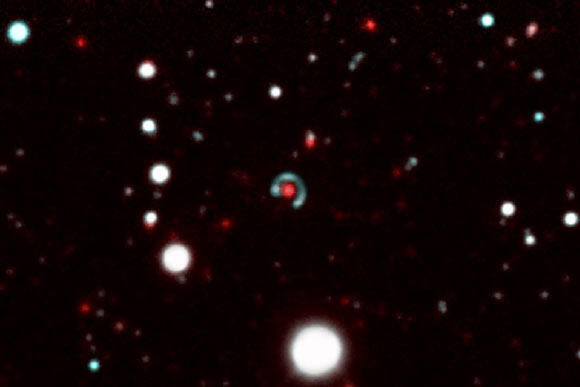In his General Theory of Relativity, Albert Einstein predicted that gravity would distort the fabric of spacetime, and that light would follow curved paths as a result.
Astronomers first observed this effect almost a century ago, by measuring the position of stars near the Sun during the 1919 total solar eclipse, and noting a slight shift resulting from the Sun’s gravitational field.
On a larger scale, light from distant galaxies is bent by black holes and massive galaxies that lie between them and our planet. The intervening objects act as lenses, creating cosmic arcs and rings.
The newly-discovered ring lies in the direction of the southern constellation Sculptor.
Dubbed the Canarias Einstein ring and also known as IAC J010127-334319, it is an almost complete ring (about 300°) with a diameter of 4.5 arcsec — larger than most of the other Einstein rings found to date.
Margherita Bettinelli, an astronomer at the Instituto de Astrofisica de Canarias, Spain, and her colleagues found it while looking at archive images from the Dark Energy Camera (DECam) mounted on the 4-m Victor Blanco telescope at the Cerro Tololo Inter-American Observatory in Chile.
“An Einstein ring is a distorted image of a very distant galaxy, which is termed the source,” the astronomers said.
“The distortion is produced by the bending of the light rays from the source due to a massive galaxy, termed the lens, lying between it and the observer.”
In this particular case, the lens is a massive early-type galaxy about 6 billion light-years away. The source is a star-forming galaxy approximately 10 billion light-years away.
The discovery was reported in the online edition of the Monthly Notices of the Royal Astronomical Society (arXiv.org preprint) on May 16, 2016.
_____
Source: Sci-News, M. Bettinelli et al. The Canarias Einstein Ring: a Newly Discovered Optical Einstein Ring. MNRAS, published online May 16, 2016; doi: 10.1093/mnrasl/slw097











